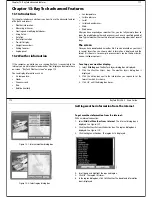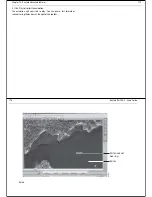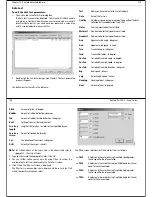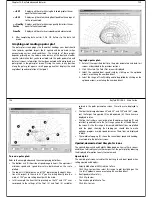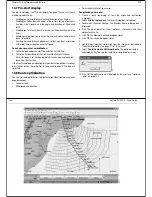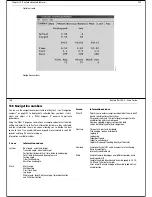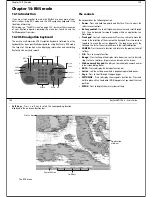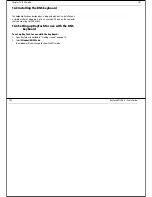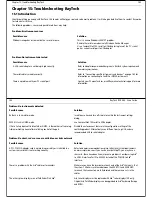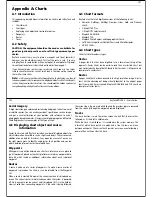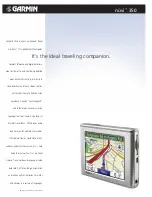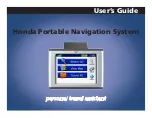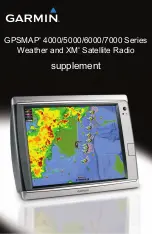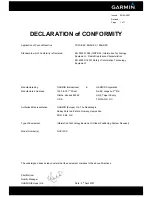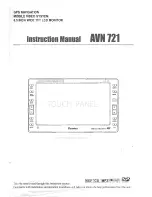
Chapter 13: RayTech advanced features
125
6. After completing data entries, Click OK. ReTurns to the data test
screen.
Graphing and reading a polar plot
The polar plot screen graphs the theoretical headings your boat should
take towards specified targets (both upwind and down wind) when
encountering various wind conditions. The accuracy of these graphs
depends primarily on the volume and accuracy of the boat and weather
specific information that you have entered into the polar parameters and
data test screens. Information that has been entered will be displayed as a
polar graph in the polar plot screen. Placing the cursor in any position
along the polar plot opens a small pop-up pane that displays the wind
angle/boat speed correlation at that point.
To graph a polar plot:
1. Enter all the requisite detail into the polar parameters and data test
screens as described in the previous sections.
2. Click
Polar
tab. The Polar Plot screen is displayed.
3. Select the required boat speed scale by clicking on the up/down
arrows, or entering the numbers direct.
4. Select the range of True Wind Speed to be plotted by clicking on the
up/down arrows, or entering the numbers direct.
> = BSP
Displays only those tests having Boat Speed greater than or
equal to the value entered.
< = BSP
Displays only those tests having Boat Speed less than or equal
to the value entered.
< = Quality
Factor
Displays only those tests having a quality factor less than or
equal to the value entered.
From/To
Displays only those tests corresponding to dates entered.
D8796
1
126
RayTech RNS V6.0 - Users Guide
To read a polar plot:
Refer to the example above and the accompanying definitions:
•
The bottom axis (1) shows boat speed range in knots. The maximum/
minimum speed and speed interval are determined on the scale
plotted.
•
The top axis (2) describes an arc of 180
o
representing the boat’s direc-
tion with respect to the wind. At 0
o
you are sailing directly into the
wind, at 180
o
you are sailing directly with the wind.
•
In this example the lines that lie precisely on the 70
o
and 110
o
axes
correspond to the settings of the Twa1 (3) and Twa2 (4) variables
entered in the polar parameters screen. These lines are displayed in
blue.
•
The lines that diverge between 30
o
and 50
o
, and 130
o
and 160
o
, repre-
sent the Target Twa upwind (5) and downwind (6). These lines are
displayed in blue.
•
The line that scribes a semi-circle, plots the optimum heading (7) and
resultant speed relative to the Tws range you enter at the bottom of
the screen. As the Tws range is increased, additional lines are plotted
onto the graph, showing the heading you should take to make
optimum progress as wind speed increases. These lines are displayed
in black.
•
The co-ordinate pop-up (8) shows the current boat speed and heading,
as entered into the data test screen.
Upwind, downwind and Vmc plot screens
The upwind, downwind and Velocity Made good on Course (Vmc) screens
enable you to directly analyze those aspects of the polar plot by reducing
the displayed information to only those elements.
Upwind plot
The upwind plot screen calculates the best angle and boat speed when
sailing upwind and displays:
•
Velocity Made Good (VMG) relative to Twa.
Click
Vmg
to view, then select Tws range to plot by clicking on the
Tws (kts))
up/down arrows or entering the numbers direct.
•
Boat speed relative to Tws.
Click
Bsp
to view.
•
True wind angle relative to Tws.
Click
Twa
to view.
1
2
3
4
5
6
7
8
D8797_1
Summary of Contents for Pathfinder
Page 1: ......








